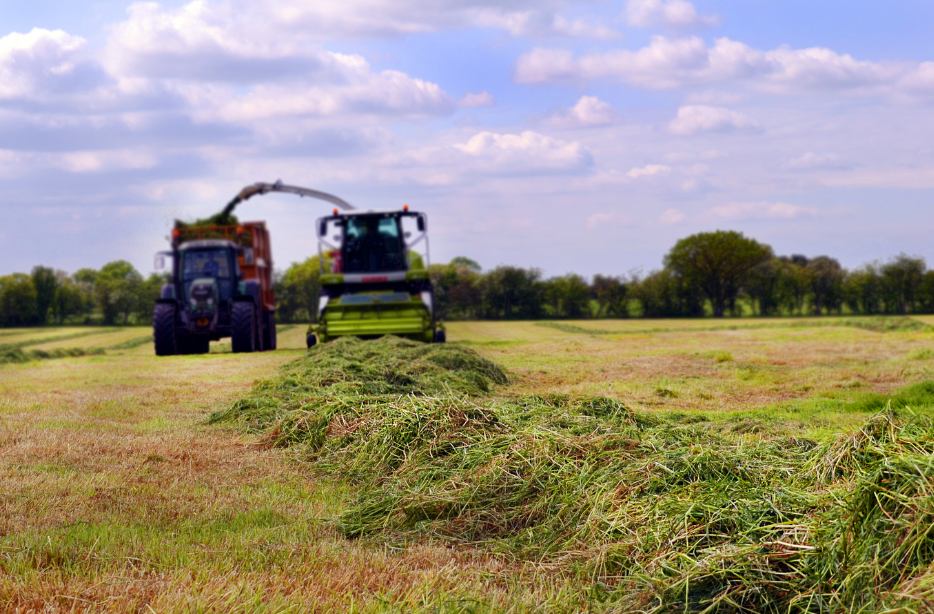May has been a difficult month for silage makers. This is because the poor weather conditions impacted many farms and had prevented the opportunity to cut grass.
Many farmers will typically cut their grass in the first two weeks of May. However, this year some still haven’t been able to get their first cut half way through the month.
Failure to cut the grass in your fields will mean the grass will be aging and D-Values will be dropping by the day.
While this unpredictable weather is frustrating for many, there are steps you can take to ensure you have fresh, delicious silage available for your herd in the months to come.
What can I do to ensure I get the best silage?
Firstly, when the rain is bad, the wet ground conditions mean that waiting to cut is exactly the right thing to do.
Why? When the conditions are too wet, you risk bringing in large amounts of soil into the clamp, which is full of bacteria.
This type of bacteria is not helpful in the silage making process. It can actually be detrimental to the quality of the silage.
In the British climate, applying 1,000,000 homofermentative bacteria to each gram of grass provides you with the best chance of the correct bacteria dominating during the crucial fermentation process, changing the grass to silage as quickly as possible.
When grass contaminated with soil or mud is brought into the clamp, the bacteria you put on the grass have to compete harder to ensure that lactic acid is the prominent acid.
This is important because that lactic acid will both preserve your forage and result in a delicious taste for your cows to enjoy during the winter months.
When you make your first cut of grass, you should cut slightly higher than you had planned to. This will give you the chance to set the tedder and rake slightly further from the ground.
This will minimise the risk of picking up soil. Furthermore, will also allow for the increased risk of machinery creating ruts.
Do I need to use a silage additive?
Adding a silage additive to your cut grass is always key when creating excellent silage. This is because it promotes that fast-acting fermentation.
Silage additives from Genus ABS will always generate that fast fermentation process. The bacteria in our silage additives efficiently converts some of the sugar available in the grass you harvest into lactic acid.
Genus ABS’ additives drive an extremely fast fermentation, creating a delicious and nutritious silage for your herd.
Filling a clamp with good quality, clean grass is the aim. And if every gram of that is treated with 1,000,000 lactic acid producing bacteria, you will be giving yourself the best chance of making great silage to feed your cows next winter.
Our customers using our additive have had a great experience and say their cows enjoy it the most, some calling it their ‘happy cow silage.’
Find out what our customers have to say here.
If you would like to learn more about silage additives by Genus ABS, visit our website or talk to your local representative today.






